Addressing Food Spoilage—The Elephant in the Room
To bolster consumer confidence and reduce food waste, the issue of food spoilage—long overshadowed by food safety—demands improved collaboration among stakeholders and new tools for detecting and identifying spoilage organisms.
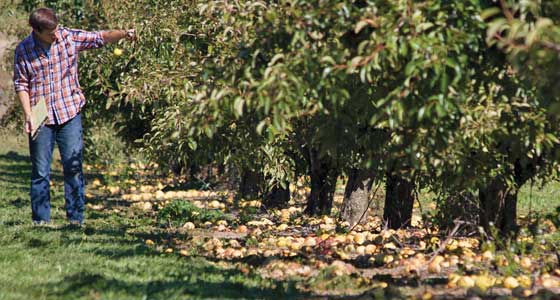
Major food spoilage incidents associated with diverse products such as cheeses, yogurt, and sauce have received national media attention in the past few years. Food companies undoubtedly prepare for food safety crises, but what happens when their product is in the news for a quality problem that is more embarrassing than dangerous? It is a question the food industry needs to consider now more than ever in a digitally connected world. Spoilage incidents reduce consumer confidence and illustrate the need for research on how to prevent embarrassing spoilage incidents from occurring in the first place.
In the past, consumers would have discarded their spoiled product directly into the trashcan rather than grabbing their smart phones and photographing the product to share via social media. This is one of the reasons why the food industry needs to focus more attention on food spoilage. Historically, the focus has been placed on pathogenic microorganisms and, reasonably so, as pathogens pose serious public health threats. However, less attention has been allocated to spoilage microorganisms and, as a consequence, a lot of the spoilage discourse today is crudely framed by the language and concepts developed for foodborne pathogens, if discussed at all.
Food Spoilage: A Flawed Framework
The concept of product recalls works equally well for both spoiled and pathogen-contaminated products. However the term “outbreak” refers only to pathogen-contaminated products. No such term exists to describe spoiled products when no recall has been issued. Such a term, though, would help make clear the difference between end of shelf-life spoilage vs. a large-scale spoilage incident that stems from a processing failure, mishandling, or problematic raw ingredients. Both represent important issues with spoilage microorganisms, but the former is an inherent attribute of the product that puts the quality burden primarily on consumers and retailers. The latter bears a greater resemblance to foodborne pathogen outbreaks. Despite the similarities, associating the term “outbreak” with spoilage may unnecessarily alarm the public.
“Food safety” commonly refers to prevention of foodborne illness through the elimination of pathogenic microorganisms, chemical, and physical hazards. “Food quality” is a term that can be understood colloquially to encompass a variety of consumer preferences, but is used technically to describe the organoleptic desirability of foods as a function of the chemical breakdown caused by enzymes, the environment, and spoilage microorganisms.
Concepts applied to food safety and quality are often conflated as a consequence of the limited discourse on spoilage. In the July 2014 issue of Food Technology, an article on spoilage-detecting packaging discussed new technologies that sense the generation of compounds resulting from the metabolic activity of spoilage microbes. The presence of the article itself is a step in the right direction and should be of general interest to the food industry. However, the article concludes that a limitation of these technologies is “spoilage from . . . invisible sources,” because these packages are unable to detect “spoilage” from small quantities of pathogenic cells, which cause harm without the release of sufficient quantities of biogenic amines to be detected. It is true that pathogenic microbes at very low levels are able to cause illness, but spoilage is inherently sensory-driven. The contradiction of “invisible spoilage” is emblematic of the struggle to address spoilage specifically.
Why Spoilage Matters
By comparison to industry, regulatory agencies and academia have historically paid little attention to spoilage microorganisms, unless it had direct impact on the potential safety of the product, such as mold spoilage increasing the pH of acid foods and allowing potential pathogens to grow. Few grants have been available as incentive for basic research on food spoilage, and regulatory requirements are largely dictated by safety. Yet, emerging factors specific to 21st century food production are strong motivators for manufacturers who have long been aware of the need for a robust food quality plan.
Determining the exact economic impact of spoilage is difficult. Estimates for waste in the U.S. food supply range from 20% to 50% of production, which varies by commodity and is dependent on the unit of measure (e.g., dollars, pounds, calories). According to one study, 40% of available food is wasted each year (Hall et al., 2009). Spoilage also impacts the supply chain in developing countries. However, much of the loss in developing nations occurs before reaching the consumer (FAO, 2012).
The magnitude of product loss expands outwards when considering the production inputs involved in generating wasted products. Which is to say, if 40% of a product is wasted, then up to 40% of the energy input, land resources, water, shipping costs, etc. is also lost. The potential energy savings resulting from even a modest decrease in spoilage would be enormous.
--- PAGE BREAK ---
Furthermore, many humanitarian groups have challenged food producers with feeding an estimated 9 billion people by 2050. Increasing food usage efficiency is one of the most obvious ways of increasing food availability. The economic and environmental impacts are in addition to increased brand confidence and the incentive of avoiding a spoilage-based recall. Collectively, the global impact of microbial spoilage on the food supply suggests the focus of food microbiologists should expand to include issues of food quality in addition to safety.
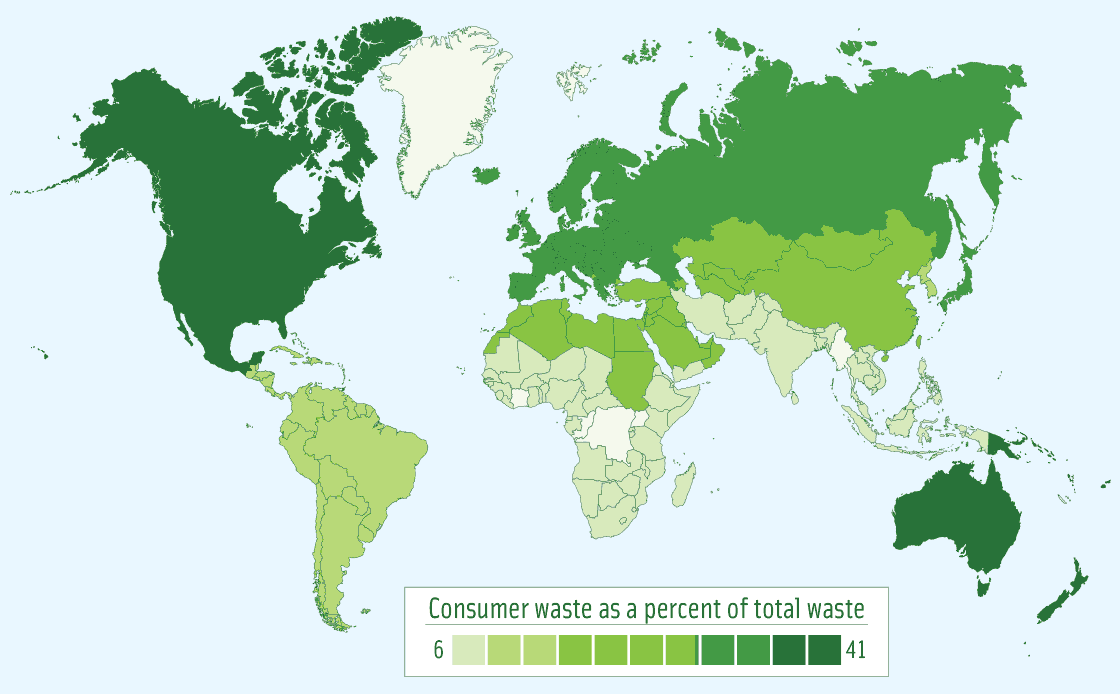
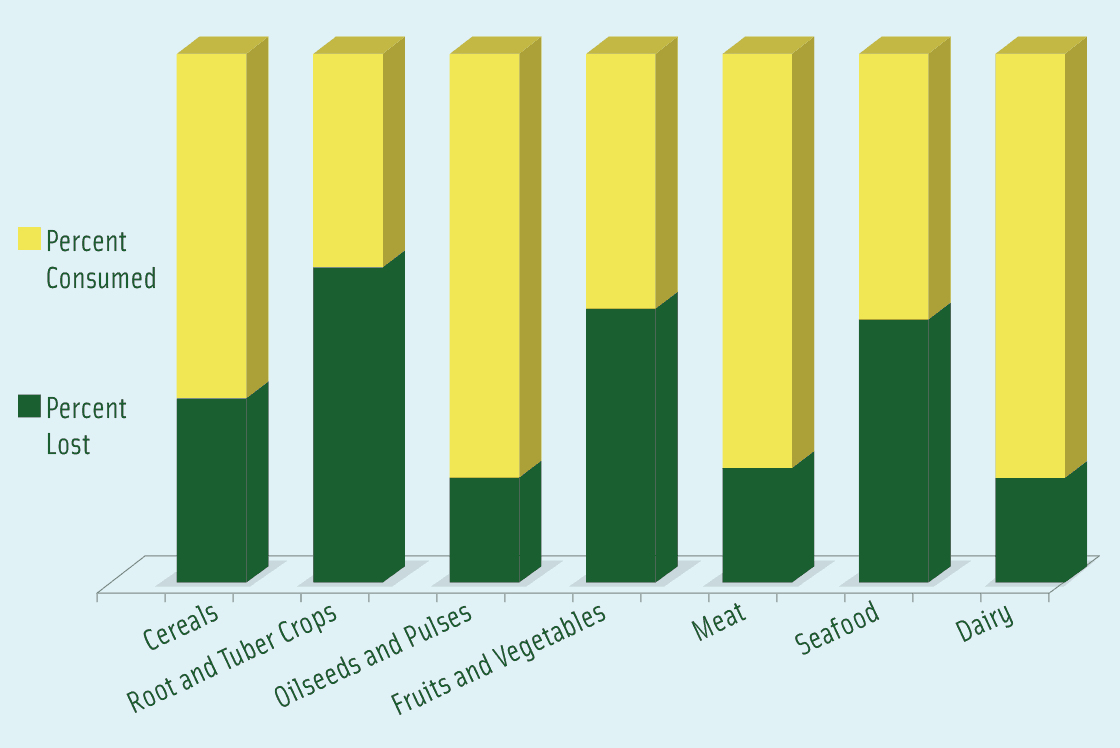
Fresh Produce Spoilage: A Model for the Significance of Sanitation Programs
Relative to the other commodity groups, fresh produce and highly perishable products like fluid milk account for a proportionally high percentage of annual waste. Although pasteurized, fluid milk serves as an excellent growth medium for spore formers that survive the thermal process. Likewise, fresh whole and cut produce provides a hospitable growth environment for spoilage organisms and, by definition, is not treated with a thermal process. Produce is often harvested prior to ripening and continues to respire during shipment, but it is not until senescence when the native defenses are diminished that produce becomes most susceptible to spoilage (Barth et al., 2009).
While food scientists consider spoilage organisms nonpathogenic because they do not cause human illness, many produce spoilage organisms are plant pathogens. They originate largely in the preharvest environment but can be found extending throughout the supply chain on contact surfaces and equipment, which leads to cross-contamination during processing. Erwinia is one of the main causative agents of soft-rot in fresh vegetables. This microbe produces a suite of pectinases that degrade the cell wall structure in plants, causing the loss of crispness that is associated with produce spoilage.
Unlike Erwinia, found in nature, some spoilage contaminants are more directly linked to poor sanitation in the processing environment. High levels of lactic acid bacteria and molds like Geotrichum, better known as machinery mold, may indicate a failure of Sanitation Standard Operating Procedures (SSOPs). This is in contrast with food safety where in many cases the mere presence of pathogens violates the product’s safety. Proliferation and, ultimately, spoilage by various organisms depends not only on presence, but also the environmental conditions.
Many spoilage organisms can be controlled by temperature, pH, and oxygen availability. Erwinia is only able to grow above 20°C at neutral pH levels. The same product under refrigeration conditions would be susceptible to Pseudomonas, another major produce spoilage bacterium, which can grow at low temperatures but is strictly aerobic. Both Pseudomonas and Erwinia can be controlled by low pH, which then selects for the outgrowth of lactic acid bacteria (Barth et al., 2009). Generally speaking, maintaining the cold chain and modified atmosphere packaging (specifically for cut produce) are two of the most important variables in preventing produce spoilage, but the addition of particular controls often creates a niche for other spoilage microorganisms. Ultimately, preventative sanitation strategies encompassed in SSOPs, GMPs, and even GAPs (Good Agricultural Practices) are the single greatest factor in reducing microbial spoilage. As with produce safety programs, no amount of downstream mitigation strategies is as effective as good sanitation from the start.
Developing effective sanitation strategies can be challenging, though, in products that are perishable. The focus should be on limiting the proliferation of spoilage organisms by reducing the incidence of early spoilage, cross-contamination, and outgrowth. Effective management of the supply chain reduces the incidence of early spoilage. Purchasing decisions including raw product or ingredient sourcing and order timing should factor in the expected costs of shelf-life loss (Rijpkema et al., 2014). Computational modeling offers a potential method for quantifying the costs of shipment and delivery timing decisions.
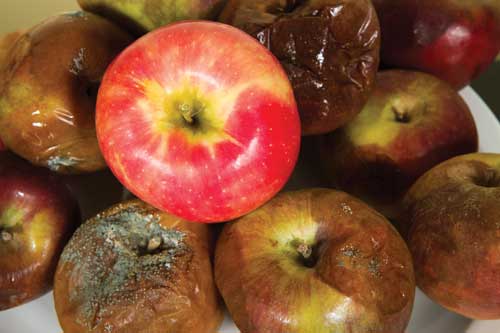 Requiring high raw ingredient quality from suppliers also reduces overall spoilage, though monitoring for microbial quality can prove challenging because of the heterogeneous nature of the product. Additional methods to reduce incidence include minimization of bruising and wounding during shipment and ensuring good crop nutrition, which decreases plant susceptibility (Barth et al., 2009). After reducing initial incidence, decreasing cross-contamination greatly reduces product loss due to spoilage. A robust sanitation program is one of the best ways to limit cross-contamination. Quickly culling spoiled units reduces shedding from wounds because, as the adage suggests, one spoiled apple can ruin the bunch. Similarly, eliminating extraneous organic matter from the processing environment as part of general SSOPs removes harborages for spoilage organisms. Pest management is also important, as insects like fruit flies can increase the spread of microbes.
Requiring high raw ingredient quality from suppliers also reduces overall spoilage, though monitoring for microbial quality can prove challenging because of the heterogeneous nature of the product. Additional methods to reduce incidence include minimization of bruising and wounding during shipment and ensuring good crop nutrition, which decreases plant susceptibility (Barth et al., 2009). After reducing initial incidence, decreasing cross-contamination greatly reduces product loss due to spoilage. A robust sanitation program is one of the best ways to limit cross-contamination. Quickly culling spoiled units reduces shedding from wounds because, as the adage suggests, one spoiled apple can ruin the bunch. Similarly, eliminating extraneous organic matter from the processing environment as part of general SSOPs removes harborages for spoilage organisms. Pest management is also important, as insects like fruit flies can increase the spread of microbes.
The loose association between total microbial population and spoilage makes it hard to establish quality standard cut-offs. As a rule of thumb, a product may be considered spoiled once the total plate count reaches 106 microorganisms/ gram. However, familiarity with the product’s sensory profile is necessary as changes are likely to occur prior to reaching this level. Moreover, decisions within the food industry must be made well in advance of spoilage. Identification of specific organisms is necessary because of the varying spoilage potential among microbes. Which is to say, just because a relatively high bacterial population is present does not necessarily mean the product will imminently spoil. While low microbial counts are associated with good microbial quality, high counts are not as tightly tied to spoilage (Barth et al., 2009). The identity and spoilage potential of the microbes present plays a major role in predicting shelf-life.
--- PAGE BREAK ---
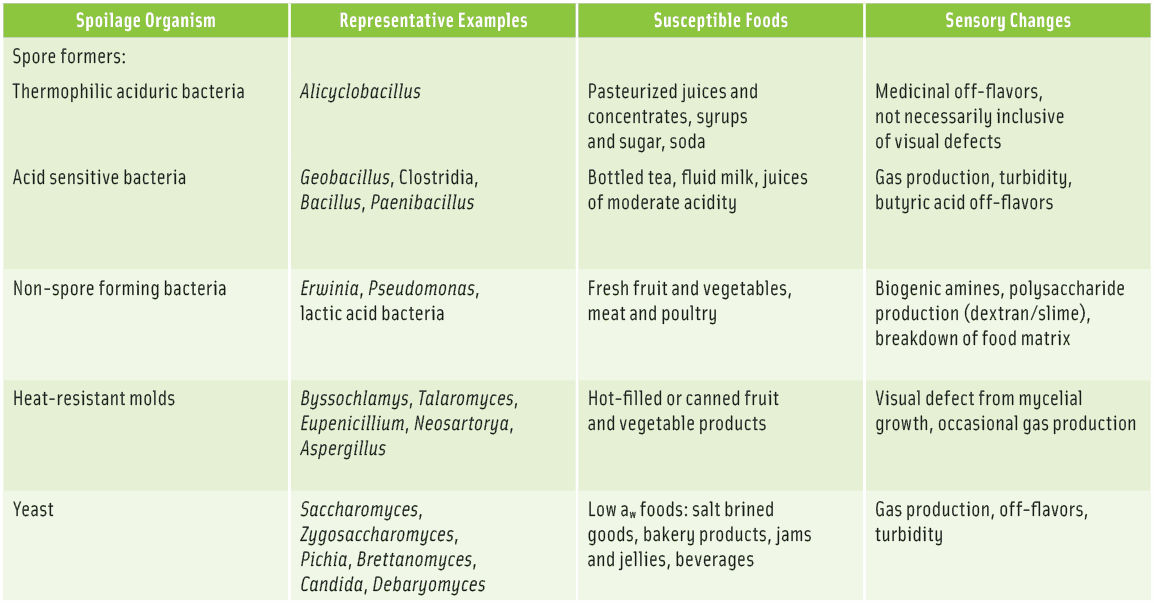 Erwinia, the soft-rot causing bacterium in produce, has a high spoilage potential because of the cell wall degrading pectinases it synthesizes. Organisms that have high spoilage potential are ones that cause obvious sensory changes (Table 1) and typically produce some kind of product-degrading enzyme involved in the organism’s metabolic processes like pectinases, proteases, or lipases; are gas producers; or whose growth has visible results, like mycelial development in molds. Janzen’s theory on the ecological merit of these sensory changes states that microbes essentially benefit from spoilage that is negatively perceived by vertebrates who may be competing with the microbes for food, so that expression of energetically costly enzymes that render the food unappealing for vertebrates give some microbes a competitive advantage. Tests such as total plate counts that do not take into account variability in spoilage potential are not specific enough, and often not rapid enough, to provide quantifiable data to establish hard cut-offs for raw ingredient quality (Barth et al., 2009). Therefore, detection and quantification of specific organisms or sensory changes are required to move the needle on spoilage prevention.
Erwinia, the soft-rot causing bacterium in produce, has a high spoilage potential because of the cell wall degrading pectinases it synthesizes. Organisms that have high spoilage potential are ones that cause obvious sensory changes (Table 1) and typically produce some kind of product-degrading enzyme involved in the organism’s metabolic processes like pectinases, proteases, or lipases; are gas producers; or whose growth has visible results, like mycelial development in molds. Janzen’s theory on the ecological merit of these sensory changes states that microbes essentially benefit from spoilage that is negatively perceived by vertebrates who may be competing with the microbes for food, so that expression of energetically costly enzymes that render the food unappealing for vertebrates give some microbes a competitive advantage. Tests such as total plate counts that do not take into account variability in spoilage potential are not specific enough, and often not rapid enough, to provide quantifiable data to establish hard cut-offs for raw ingredient quality (Barth et al., 2009). Therefore, detection and quantification of specific organisms or sensory changes are required to move the needle on spoilage prevention.
Spoilage in Processed Foods: Paradigms, Approaches, and Limitations
Delaying spoilage in fresh produce is largely a preventative game, given the sensitivity of the product to microbial growth and because few intervention strategies exist. In processed products, all the preventative measures and sanitation strategies still apply, but there are additional opportunities to mitigate spoilage in terms of processing and formulation. Many of these treatments, however, serve the counterproductive purpose of creating a specialized niche for certain microbes while eliminating pressure from most other competitor species. Changing consumer interests have brought new spoilage challenges in food processing. These include demands to reduce antimicrobial additives and thermal processing, or to change formulations to include more spoilage-prone ingredients. Food companies take different approaches in addressing quality issues. Below are two approaches to handling microbial spoilage.
Dealing with Heat Resistant Molds from the Bottom-Up
Many times spoilage issues vary across a company’s portfolio and are not a consistent problem. Lack of meaningful data makes spoilage hard to manage. “People don’t actively expect to have spoilage,” said Joe Shebuski, senior director of global food safety, quality, and regulatory for Cargill. “Spoilage comes and it goes, and people don’t really understand why it happens but they’re glad when it’s gone,” he said. “It hasn’t risen to the level where there are resources dedicated to investigate it as we would like.” Resources such as rapid detection methods are crucial in determining the causative agent in product spoilage, and in traceback analysis to identify the source of the contaminant.
Shebuski referenced heat-resistant molds, such as Byssochlamys fulva, contaminating tomato-based products. The mold survives thermal processing in fruit and vegetable products and outgrowth is later detected by consumers, sometimes long after the product was purchased. “Heat-resistant molds grow so slowly, it’s impractical to do finished product testing,” he said. “It can take several days to determine what you had.”
Since occurrence is intermittent and safety is generally not at stake, many of these issues are addressed at the plant level. Spoilage incidents are often the consequence of unique situations that are plant specific. Examples include the set-up of individual processing equipment and environmental conditions. Employee behavior is a big factor in determining food quality, as it is with safety. Inconsistent ingredient quality, culling practices, and a lack of testing methods with defined standards are more challenges with variability.
Shebuski went on to describe the need for more rapid detection methods that were readily accessible to industry, and not simply academic exercises. When isolated spoilage incidents do occur at a plant, a viable testing method would help address the problem. However, “because no one is really talking about the spoilage issues they have, [biotech companies] are not going to invest the resources into development,” Shebuski said. “If people were talking about having ongoing issues in a large way, there would be the sense of a much larger problem, and a much larger demand.”
Addressing microbial spoilage is difficult if producers are unwilling to share the challenges they have experienced. Open discourse is paramount in gathering information about real-world spoilage issues. This is in contrast with information regarding outbreaks of foodborne pathogens, which is collected by government agencies. And, many of the regulations and practices to control pathogens stem directly from those data, so having information regarding commercial spoilage is likewise critical in establishing effective control measures. Development of improved detection methods and standards is critically dependent on information gathered from processing environments, with all their variability.
Dealing with Environmental Contaminants from the Top-Down
Sean Leighton, director of quality, safety, and environmental at The Coca-Cola Co., echoed the demand for improved enumeration methods. Leighton was interested in an assay that was more quantitative, regardless of speed. “For me it’s about getting a more sensitive test, that looks at an entire package, not just a milliliter, to get the amount [of spoilage microbes] not just the presence or absence. Because we’re not holding the product waiting on the result, it’s about monitoring.” The Coca-Cola Co. has addressed quality from a corporate level. Brand protection is key for a company that is such an established household name. Additionally, the relative homogeneity of beverages compared to other food products in some ways makes them ideal candidates for a top-down approach to quality management.
Leighton acknowledged some similarities in his company’s approach to safety and quality, citing the use of critical quality points instead of critical control points as one strategy for addressing environmental contamination.
However, in other ways, Leighton suggested that safety and quality were vastly different. “Food safety and quality have been lumped together for too long,” Leighton said. “There are certain non-negotiables that drive food safety. Those are not business decisions. But you can take calculated risks with quality, from a business perspective . . . and so you might find a business having one appetite for quality and another business having another.”
--- PAGE BREAK ---
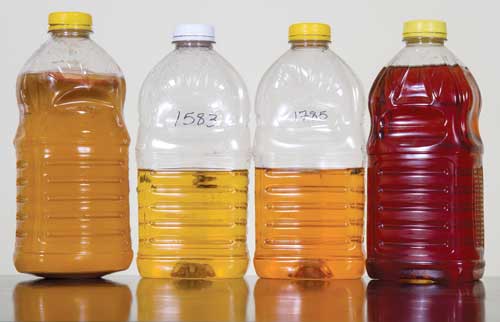 Leighton identified one spoilage challenge as environmental contamination, including Alicyclobacillus, heat resistant molds, and Brettanomyces/Dekkera, during bottling. Subsequently, the bottling step has been recognized as a critical quality point in Coca-Cola’s production line and governance standards have been imposed on its bottling companies.
Leighton identified one spoilage challenge as environmental contamination, including Alicyclobacillus, heat resistant molds, and Brettanomyces/Dekkera, during bottling. Subsequently, the bottling step has been recognized as a critical quality point in Coca-Cola’s production line and governance standards have been imposed on its bottling companies.
This involves a highly centralized QA structure using internal audits. “The Coca-Cola Co. is so brand centric and has been keenly aware of the things that de-value the brand,” Leighton said. “Our current CEO has gone on the record saying that quality issues are one of two things that keep him awake at night. The biggest problem we have right now is the people, they just think we make soda-pop. So we have to change our mentality to be about maintaining GMPs. This is not a technical challenge. The challenge is about people. Driving the right culture, education, training, so people understand food science.”
Current Methods and Remaining Needs
Industry perspectives like these are needed to shape the thinking on food quality. As was suggested, a great deal of resources and data are still required. Detection and enumeration of spoilage microbes is limited by the availability of media and nonculture-based methods sensitive enough for quantitation, rapid enough for application, and specific enough to detect only the target spoilage organism. For some microbes, selective media does not yet exist. Despite this, the vast majority of monitoring work for spoilage organisms is culture-based. Molds and yeasts are often cultured together on a single medium, which does not allow for monitoring specific spoilage organisms (Barth et al., 2009). Much of the diagnostic work for produce spoilage is based on visual analysis in the field or plant, partly because of the lack of sufficient laboratory techniques.
Academia and biotechnology companies need to develop appropriate media and nonculture-based techniques specific to the relevant spoilage organisms, similar to the relative availability of methods for pathogens. Nonculture-based approaches are often faster than media dependent methods, particularly when the target organism is a slow grower. Characterization of the spoilage compounds responsible for the change in quality instead of the organism itself is another rapid method to monitor a product’s quality over time, or to validate the spoilage potential of particular organisms. Several methods for the detection of biogenic amines using benchtop equipment or sensors embedded in packaging already exist, but more work needs to be done to make these technologies cost effective and easily adaptable.
Primary research is still needed to develop the framework in which these novel techniques can be created and applied. Identification of major spoilage organisms and indicator organisms relevant to particular products is necessary in order to target the development of selective media. Identification of individual species and strains with high spoilage potential, and subsequent identification of markers is necessary in order to target the development of nonculture-based methods.
Links need to be created between sanitation procedures that occur at fixed points and the control of specific spoilage organisms so that meaningful procedures can be established. All of this is dependent on broader data collection and regular monitoring in an iterative design, along with the advancement of the language framework in which spoilage microbiology is discussed.
In many of these cases, the needs are similar to what has already been established in the control of foodborne pathogens. However, there are crucial differences between addressing food safety and addressing food quality. These distinctions stem from the difference in the target organisms themselves, the fact that not just presence but outgrowth is required for a product to be deemed unacceptable, and a company’s corrective action plan may vary drastically when the issue is quality as opposed to safety. The increased attention spoilage has received has brought the absence of information and resources to light. The potential payoff for shelf-life extension is also great. Intentional work should be directed to addressing spoilage because ignoring these issues is no longer a viable option for food producers.
Abigail B. Snyder, an IFT member, is a graduate student,
Dept. of Food Science, Cornell Univ. ([email protected]).
Randy W. Worobo, PhD, a professional IFT member, is a professor,
Dept. of Food Science, Cornell Univ. ([email protected]).
The authors acknowledge Rob Way and Pat Petzel for their assistance.
References
Barth, M., Hankinson, T., Zhuang, H., and Breidt, F. 2009. Microbiological Spoilage of Fruits and Vegetables, Chpt in “Compendium in the Microbiological Spoilage of Foods and Beverages,” eds. Sperber, W. and Doyle, M. 135-183. Springer Science+Business Media, LLC.
FAO. 2012. Save Food: Global Initiative on Food Loss and Waste Reduction. http://www.fao.org/save-food/en/. Accessed 2014.
Hall, K., Guo, J., Dore, M., and Chow, C. 2009. The Progressive Increase of Food Waste in America and Its Environmental Impact. PLoS One. 4(11): e7940.
Leighton, S. 2014. Personal communication. The Coca-Cola Company. Vienna, Austria.
Rijpkema, W., Rossi, R., and van der Vorst, J. 2014. Effective sourcing strategies for perishable product supply chains, Int J Physical Distribution and Management. 44(6): 494-510.
Shebuski, J. 2014. Personal communication. Cargill Incorporated. Wayzata, Minnesota.
